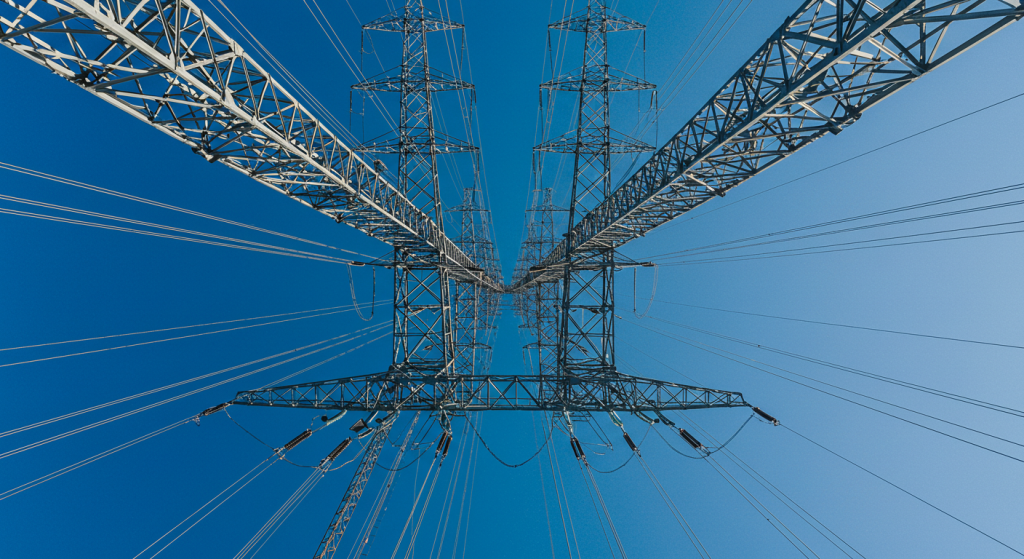What are Powerline Towers? A Deep Dive into Their Significance
2025-04-19
What are Powerline Towers?
These pylons are a combination of economic and mechanical structures strategically built in regions of high energy demand and are influenced by extreme environmental forces such as wind, ice, and earthquakes. The strength and design of the tower dictate the proficiency of power transmission.
Powerline Towers: The Most Important Factor in Transmitting Electricity
Powerline towers, or better known as transmission towers, are the second most important infrastructure after power plants in energizing the globe. These tall towers hold power lines that transmit electricity from substations to homes and industries. In order to maintain a power grid, it is important to give attention to its management, classification, and parts.
What are the Benefits of Powerline Towers?
All transmission power starts from a primary bending point - the power plants, from where electricity is evenly supplied to regions both within the city and in the outskirts of town. Transmission of power need not incur additional spending due to the objective height or slim frame of the towers. Gaining supportive pylons not only restores additional expenses but also cuts down expenses on fuel protection, lowers suspension edges, and provides better ultra-low configurations.
- Powerline Towers bring power up to the utmost goal of flowers for bountiful harvests
Effortlessly maintaining power from power facilities, these towers also suppress energy loss and secure predictable energy delivery. It is extremely imperative to remember34 all inclined angles to obtain towers for the transport of fuel from devices positioned around the world.
- Economic Infrastructure
These towers are cost-effective when compared to underground power lines. Overhead towers require fewer resources and excavation work.
- Growth Potential
Powerline towers are efficient because they allow for the expansion of electrical grids to meet growing energy requirements. Furthermore, these towers are a flexible infrastructure for future developments in power distribution.
- Resilience and Longevity
Because of their strong steel or aluminum construction, these towers can endure strong winds, storms, and extreme temperatures, allowing for the sustained use of these towers for very long periods of time.
- Easy Upkeep
These towers are a reliable option for long-term power transmission as they require little upkeep after installation, making them a dependable choice.

Lattice Tower: The Best Powerline Tower Choice
- Strength and Reliability
These types of towers are appropriate for long-term infrastructure projects because of the steel lattice towers' unique ability to sustain high deflections and dynamic loads while maintaining a sleek and lightweight profile. Their enduring construction also makes them reliable against external forces like strong winds, heavy snow, or seismic activity.
- Cost-Efficient and Adaptable
Compared to other towers, lattice towers offer an affordable and adaptable solution for power transmission. For cover suspension loads such as power pylons and antennae spanning large distances, they are utilized extensively with low maintenance needs.
- Perfect Fit for Power Transmission
Due to their strong yet light structure, lattice towers are perfect for supporting electrical lines over long distances. Their endurance to supply harsh environmental conditions makes them a favorite in the energy sector.
How to Pick a Suitable Powerline Tower?
Choosing the correct powerline tower requires an evaluation of several technical, geographical, and legal aspects. The critical factors include:
1. Power Voltage, and Load Capacity
Different towers of power lines have different ranges of voltages. Supported by heavier electrical loads and conductors, higher voltage transmission requires strong towers.
2. Environmental and Geological Considerations
The powerline tower type required is determined by the region’s climate, terrain, and natural hazards. Areas that frequently experience high winds or seismic activity need specially designed towers.
3. Material Selection
Aluminum, steel, and composite materials are the main components utilized to build powerline towers. The most used and durable, aluminum towers provide a lightweight alternative, while steel towers are preferred.
4. Design Type
Types of tower designs include:
• Lattice Towers: These are strong, low-cost towers that are typically employed for the transmission of high voltages.
• Tubular Steel Towers: These towers are elegant and conserve space, making them appropriate for areas of high population density.
• Guyed Towers: These towers need very minimal foundation, making them ideal in places with soft soil.
5. Compliance with Safety and Regulatory Standards
Make sure that the selected powerline tower has the necessary local and international compliance with safety regulations so that there is minimal impact on the environment and efficient operations.
Key Components of Powerline Towers
Each powerline tower is composed of the following critical components:
• Tower Body: Refers to the primary structure, which supports all elements in the tower.
• Cross Arms: These protrude from the tower body and serve the purpose of retaining conductors.
• Insulators: Prevent electrical currents from passing through the tower.
• Conductors: These components give the power that flows through the grid
• Earth Wire (Ground Wire): This component averts direct lightning strikes on the tower.
Design Factors of Powerline Towers
For designing these towers, the following factors are important:
- Load Capacity:
There should be no discrepancies in terms of structural support and the environmental forces considered, like the high-voltage transmission lines.
- Vertical Wind and Ice Loads:
There should be no discrepancies in vertical wind forces along with any ice accretion.
- Seismic Factors:
Where the zone is prone to earthquakes, the towers need to be much more stable.
- Right of Way (ROW) Compliance:
Clearance from structure, as well as any growth, is a necessity.
Environmental Considerations of Powerline Towers
These towers are needed for electricity transmission, but pose environmental concerns such as:
• Deforestation: Transmission corridor land clearing.
• Disruption to Wildlife: Altering bird migration and nesting sites.
• Electric Magnetic Field (EMF): Health risks to surrounding populations.
• Sight and Impact: Affects the skyline, especially within metropolitan areas.
Shifts and Emphasis in Powerline Tower Technology
Newer technologies are continually evolving the power transmission sector's industries, like:
• Smart Towers: Having sensors for real-time data collection.
• HVDC Transmission: Minimizing power usage for extensive transmission.
• Lightweight, non-rusting, non-steel composite materials: Advanced technology.
• Moveable underground cables: Minimizing visual pollution in urban areas.
Conclusion:
With the fine infrastructure for modern energy, powerline towers are sequentially placed globally to be designed for easy access and maintenance, enabling efficient transmission of electricity designed for automation and power distribution systems. Studying the various types, components, and aspects of powerline towers improves their operational efficiency and mitigates environmental damage. Visit XY Tower for additional information on powerline towers.

Hey, I’m Chunjian Shu
"X.Y. Tower: Reliable, innovative solutions for high-quality towers and electrical equipment with professional service.
